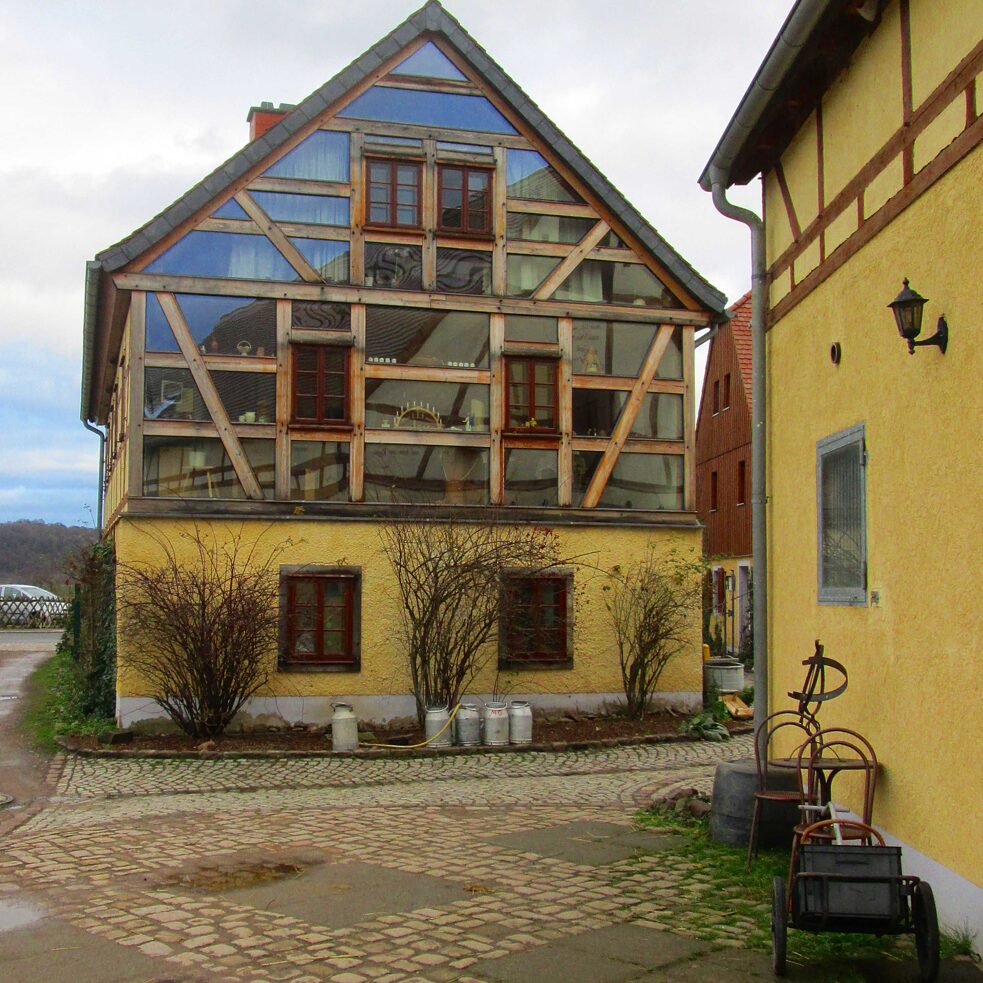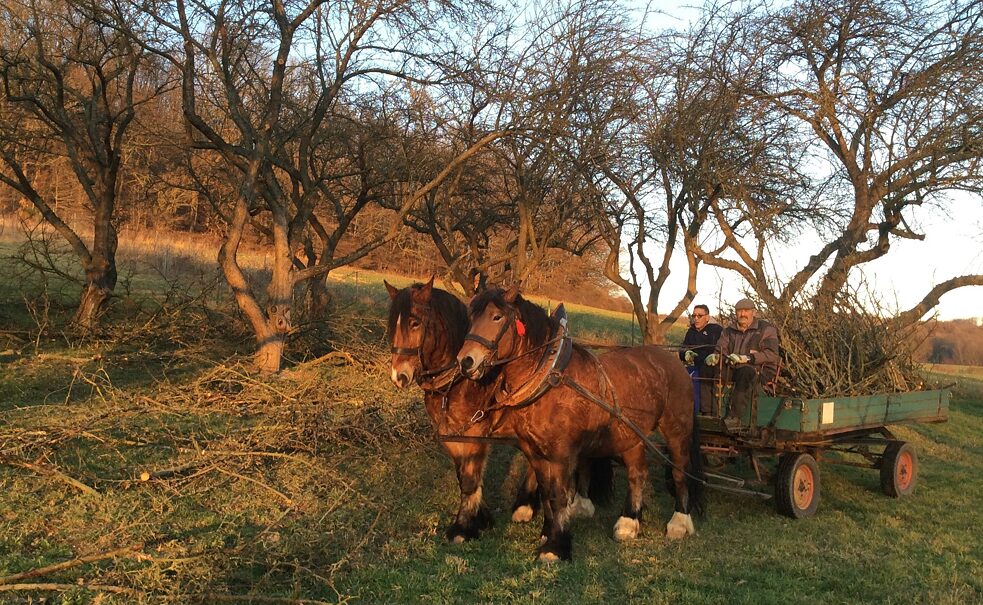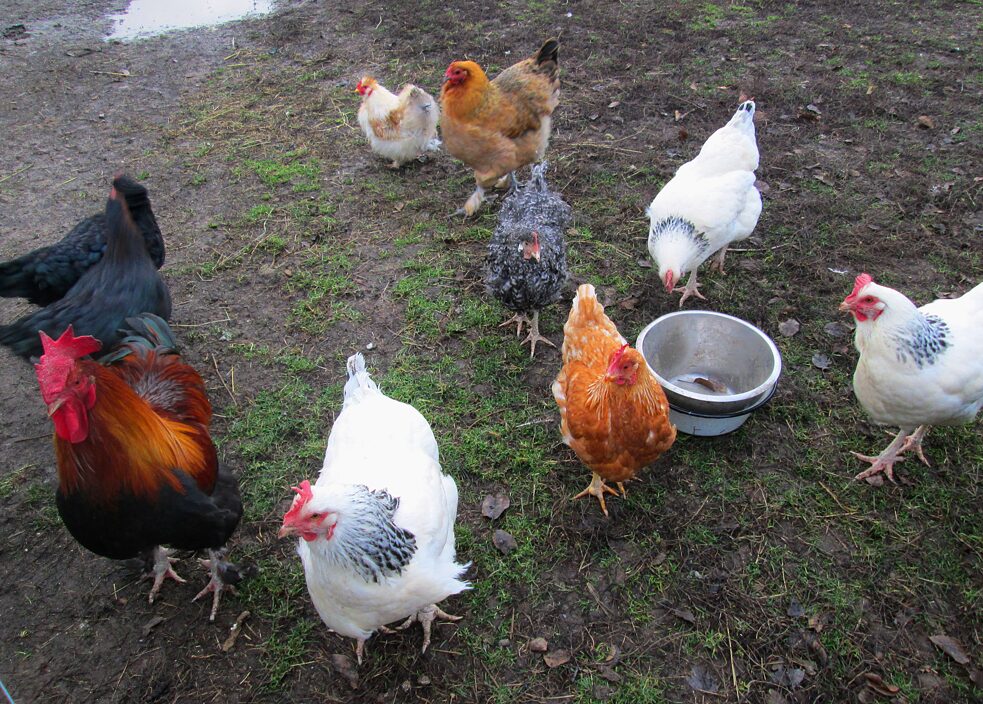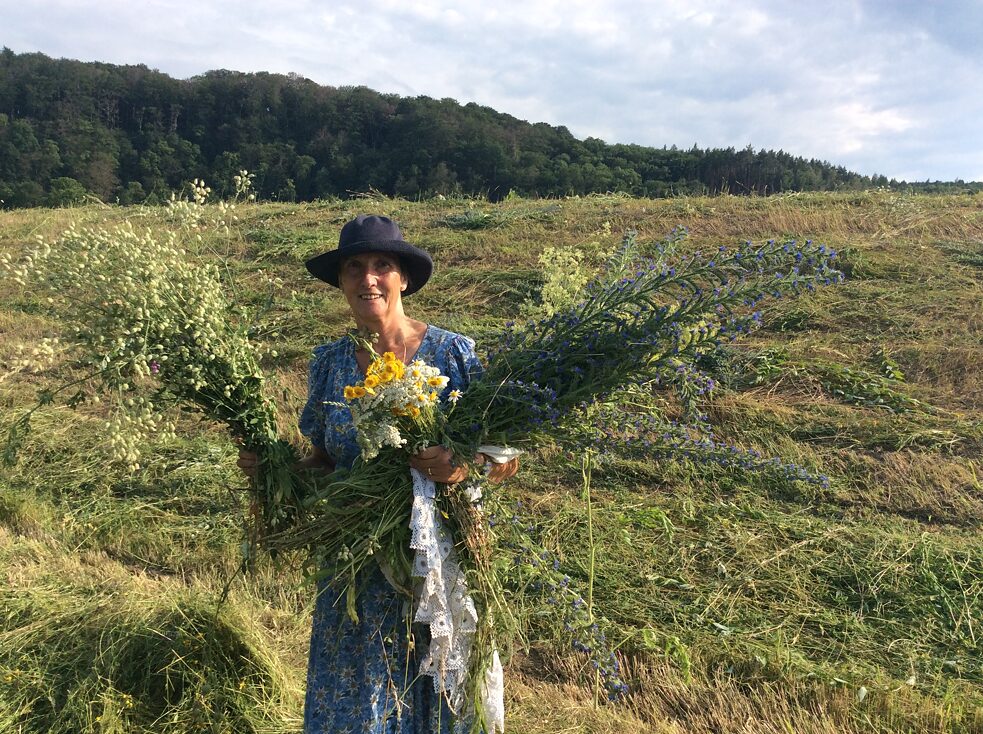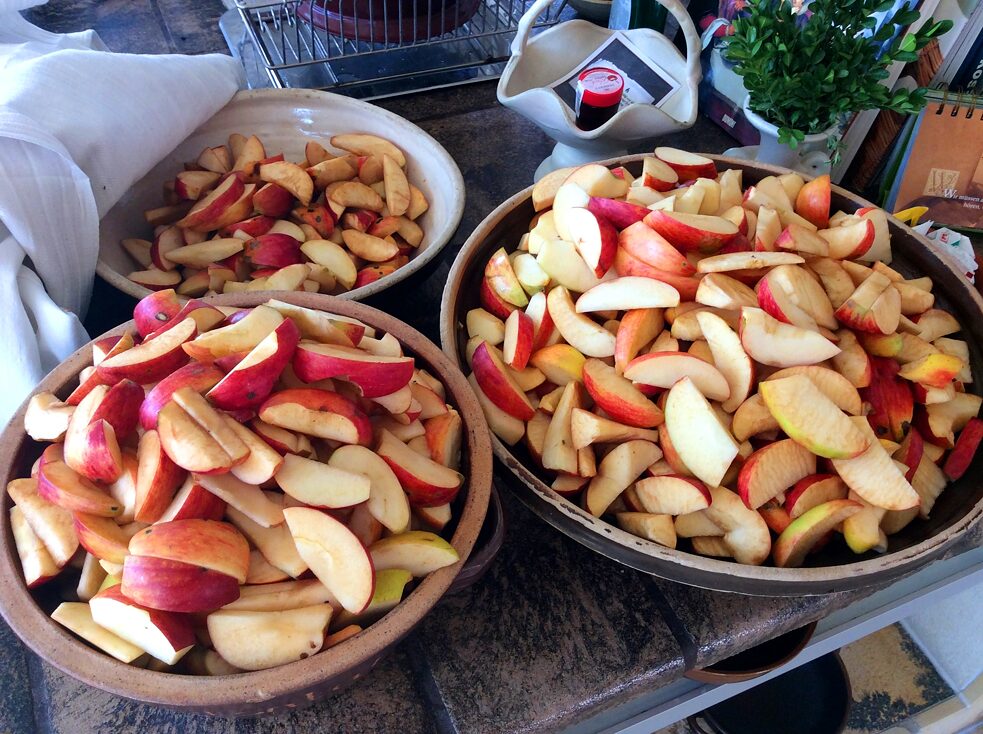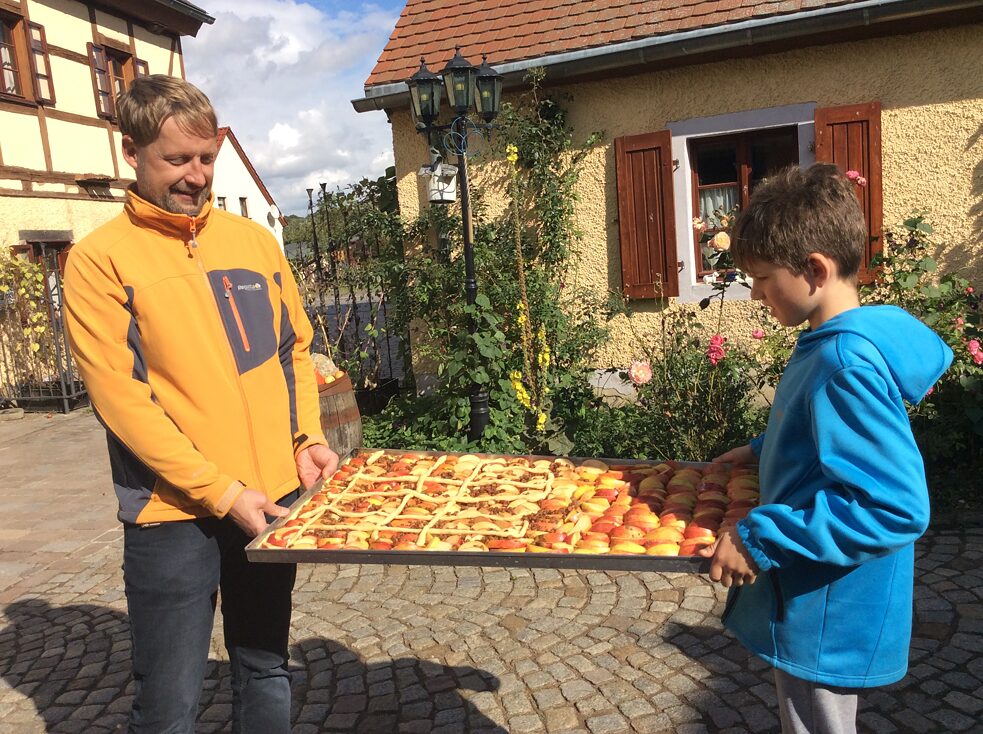Sustainable Tourism
Visit to the Klosterbuch “ark farm”: endangered livestock breeds and holistic agriculture
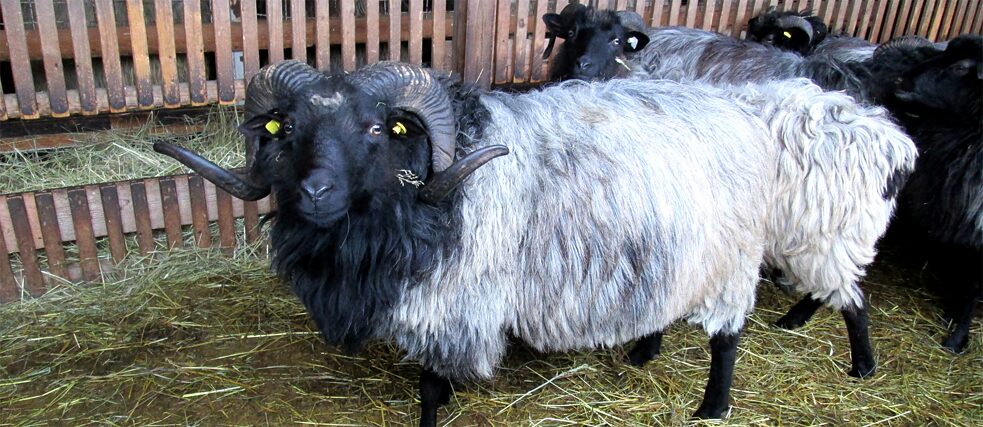
Most of us are aware that exotic animals like lions and tigers, and numerous marine fauna species, are endangered. But there are also many species at risk of extinction, or already extinct, here in Germany, in our own back yard – particularly heritage livestock breeds. Reason enough, I decided, to take a closer look at this issue, and at some of the successful efforts being undertaken to ensure their survival.
By Marina Bierbrauer
Our agriculture today is focused on maximum efficiency and productivity. This has led to a concentration on just a few high-performance livestock breeds. Yet there are all sorts of breeds of cattle, hens, sheep and goats, for example, that formerly had an important part to play in agriculture, but are rarely farmed today, and therefore at risk of extinction.
GEH and its “ark farm” concept
The Society for the Conservation of Old and Endangered Livestock Breeds (GEH), a German incorporated society, keeps an annually updated Red List of endangered domestic and livestock breeds. There are currently more than 90 breeds on the list.It has developed the concept of an “ark farm” (Archehof in German), which is registered as a protected name. Establishments claiming ark farm status are therefore required to meet a list of strictly defined criteria. In particular, they must commit to rearing endangered breeds, keeping them in appropriate conditions for the species, and integrating them in the farm operation.
Another GEH objective is to raise public awareness of this issue. Most ark farms are therefore open to interested visitors, including educational programmes and activities for children. One such establishment is the ark farm in Klosterbuch.
The GEH project seems to have been a success, because since the society’s establishment in 1981, no breed on the Red List has actually become extinct.
The Klosterbuch ARK FARM
First I wanted to get an idea of what the keeping and rearing of endangered livestock breeds actually involves. So I spent a highly informative afternoon finding out about biodynamic sustainable farming. Along with its stock farming operation, I was told that the Klosterbuch farm has several fields of agricultural crops, plus a meadow orchard.The Bioland-certified farm is run by the three-field crop rotation system, on the basis of traditional farming principles. That includes minimum interference with natural cycles, including the animals’ reproductive cycles. The farm also produces food products and seed.
Nature is a cycle, I was told, in which every component has a part to play. All the farm’s outputs can be fed back into the cycle – by using chicken dung as manure for trees, for example.
The animals on the Klosterbuch ark farm
At the Klosterbuch farm, visitors can actually see and touch a number of at-risk breeds that most of us have barely heard of: Rhenish German coldblood horses, Saxony hens, German laying geese, Erzgebirg goats, Meissner lop rabbits, and two remarkable sheep breeds – the white polled heath and German moor sheep.True to the GEH “ark” concept, these are working animals, rather than exhibits raised to spend their time standing around in stables or cowsheds, or just grazing in the fields. The farm is not some kind of zoo. They are kept in conditions suited to the characteristics of the species, and used as genuine farm animals. Protection and utilisation go hand in hand.
The Rhenish German coldblood, for example, is a horse breed with a particularly strong build, originally used as draught horses working in the fields. It is therefore used for this purpose at Klosterbuch, eliminating the need for fossil fuel-driven vehicles.
The two sheep breeds (the white polled heath and German moor sheep) also perform a valuable function for the entire village. Klosterbuch’s location in the territory of the Freiberg river system makes it susceptible to flooding. But the sheep graze on the newly formed dike, compacting the ground underfoot and thus ensuring the stability of the structure. This makes a real contribution to the resilience of the region – in the big flood of 2002, the entire farm and the abbey opposite were inundated, but in the last flood in 2017, thanks to the new, higher dike and the sheep, the area remained dry.
The ark farm as a holiday destination
The farm also offers rustic but comfortable accommodation for holiday visitors, as an important part of the business operation. The proprietors, the Pohls, are delighted to welcome young families, couples or individuals from the city who want to relax in a natural environment, and learn something at the same time. The hosts know a lot about a holistic natural lifestyle and living in harmony with the environment, and are more than happy to share their knowledge.Guests have the choice of relaxing during their stay, or helping out on the farm – the animals always appreciate a little stroking, for example.
Some overnighting guests are also here to visit the Buch Abbey over the road from the farm, which is a popular venue for social functions and weddings.
The guesthouse, in an old half-timber building, now fully refurbished, has a total of 20 beds, in rooms designed to provide simple yet comfortable accommodation. Each room is furnished differently – some are heated with a stove, and wherever possible old pieces of wooden furniture are used. There is a rustic shared kitchen, and the bathroom facilities are also shared with the other guests.
Klosterbuch is located in the heart of Saxony, more or less mid-way between Leipzig, Dresden and Chemnitz, and is therefore easily accessible from various directions. Along with the farm-based activities, it is also a starting point for walking and cycling trails, and an ideal base for visiting the numerous castles in the area.
After my day spent at the Klosterbuch ark farm I had learned a lot – more than I had imagined at the outset. I received a warm welcome from Mrs Pohl, who gave me a lot of her time, seemingly as a matter of course. And along with all my newly acquired knowledge, I came away with some delicious apples from the meadow orchard, not to mention some home-made apple jelly!
